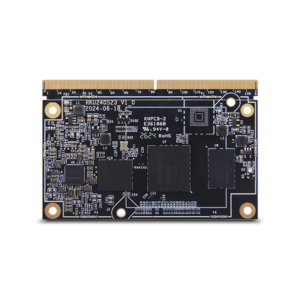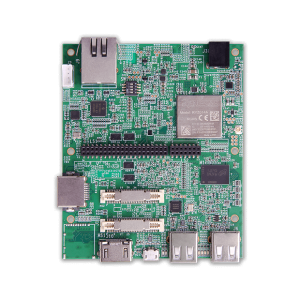From Concept to Production: How Computer-on-Modules Simplify Embedded Design
From Concept to Production: How Computer-on-Modules Simplify Embedded Design
Blog Article
Accelerating Product Development with Versatile Computer-on-Modules
In the current fast-paced technical landscape, corporations and developers are increasingly embracing modular alternatives to meet the ever-growing needs of high-performance applications. One such answer increasing traction is the utilization of computer on module. These small, self-contained programs are packed with all the essential components of a pc, like the processor, storage, storage, and connection interfaces, all built-into an individual unit. In this short article, we investigate why Computer-on-Modules are being a go-to choice for scalable, high-performance purposes across numerous industries.

1. Compact Design and Integration
One of the principal advantages of COMs is their small sort factor. These modules are designed to integrate all critical aspects of some type of computer, lowering the requirement for numerous distinct pieces and making it simpler to produce small, space-efficient systems. This integration helps designers to build strong options without reducing the entire size of the conclusion solution, which is particularly beneficial in industries such as for example stuck programs, IoT products, and industrial automation.
2. Scalability for Varied Purposes
Scalability is an essential element for contemporary programs, particularly in areas like telecommunications, automotive, and side computing. With Computer-on-Modules, businesses can very quickly scale up or down with regards to the specific performance and source demands of these projects. As an example, a business creating an edge processing alternative can begin with a component that meets standard wants and then update to better segments as the workload or handling needs grow. This adaptability allows corporations to future-proof their opportunities and align electronics with evolving efficiency demands.
3. High-Performance Processing
Several high-performance purposes involve an effective computational backbone to handle demanding projects such as real-time knowledge processing, video analytics, or device learning. COMs are generally developed with strong processors, high-speed interfaces, and sufficient memory, creating them effective at offering the large throughput and low-latency efficiency needed for these applications. More over, their capacity to support the latest model architectures ensures that methods may stay at the lead of performance benchmarks.
4. Charge Efficiency and Time Savings
Still another significant advantage of applying Computer-on-Modules is cost efficiency. Because the modules come pre-integrated with essential parts, designers save your self both time and assets that could otherwise be used on planning, screening, and building individual components. This could lead to paid down progress cycles and a quicker time-to-market for products and services, that is crucial in aggressive industries. Also, because the electronics parts are standardized, the danger of incompatibility is decreased, ultimately causing better growth functions and lower engineering costs.
5. Variable Customization
While COMs give you a high amount of integration, they're also made for flexibility. Many COMs come with numerous options for I/O interfaces, storage configurations, and power administration alternatives, enabling developers to custom the module to the particular needs of these application. That flexibility is particularly important in industries wherever modification is crucial, such as medical units, robotics, and automotive applications.

Conclusion
To sum up, Computer-on-Modules present numerous benefits for corporations and designers looking to produce scalable, high-performance solutions. Their compact design, scalability, effective processing functions, cost-efficiency, and modification possibilities make them an ideal selection for a wide variety of applications. As industries continue to evolve and need better, variable alternatives, COMs may certainly enjoy a essential position in surrounding the continuing future of technology. Report this page